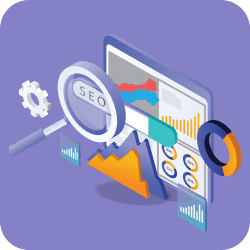Build a Strong Online Presence
In today’s fast-paced business environment, leveraging digital tools is essential to stay competitive. Whether you’re a small startup or an established enterprise, the right tools can dramatically improve efficiency, collaboration, and productivity across your organization.

Understanding the Importance of an Online Presence

Expanding Your Reach
An online presence allows small businesses to reach a larger, more diverse audience beyond their local area. It opens the door to new markets and potential customers.

Establishing Credibility
Customers are more likely to trust businesses with a professional online presence. A well-maintained website and active social media profiles build credibility and reassure customers about the legitimacy of your business.

Enhancing Customer Engagement
Online platforms provide direct channels for engaging with customers. Through social media, email marketing, and other platforms, you can address customer needs, offer support, and gather feedback in real-time.
Setting Up Your Online Presence
The first steps in building an online presence involve creating a website, setting up social media profiles, and managing business listings.

1. Building a User-Friendly Website: A website is the cornerstone of your online presence. It’s often the first place customers will go to learn more about your business.
- Choose a Simple Domain Name: Your domain name should be easy to remember and directly related to your business name.
- Ensure Mobile Compatibility: Most users access websites via mobile, so it’s critical that your site is mobile-friendly.
- Create Clear Navigation: Make it easy for visitors to find information, whether it’s your product offerings, contact information, or blog.

2. Optimizing for Search Engines (SEO): To improve visibility, your website needs to be optimized for search engines.
- Use Relevant Keywords: Research keywords that your target audience uses to find services like yours and incorporate them naturally in your website content.
- Optimize Meta Tags: Meta titles and descriptions should be clear, concise, and include relevant keywords.
- Produce Quality Content: High-quality, valuable content that addresses common customer questions can improve your SEO and build trust with your audience.

3. Claiming and Managing Business Listings: Business listings such as Google My Business, Yelp, and Bing Places improve your local SEO and help people find you online.
- Keep Information Accurate: Ensure your contact information, business hours, and address are consistent and up-to-date across all listings.
- Encourage Customer Reviews: Positive reviews not only boost credibility but also improve your ranking in local searches.
Leveraging Social Media to Connect with Your Audience
Social media platforms offer powerful tools to engage customers, build relationships, and boost brand awareness. Select platforms based on where your audience spends their time.

Choosing the Right Platforms: Each social media platform serves different purposes and demographics. Choose the ones that best align with your target audience.
- Facebook: Great for sharing news, engaging with local customers, and creating community through groups and events.
- Instagram: Ideal for businesses that rely on visuals, like food, fashion, and lifestyle brands. Instagram Stories and Reels are effective for short, engaging content.
- LinkedIn: A good choice for B2B businesses and networking with professionals in your industry.

Creating a Consistent Posting Schedule: Consistency is key to maintaining a strong social media presence.
- Plan Content in Advance: Use a content calendar to schedule posts and maintain consistency.
- Mix Up Content Types: Share a variety of posts, including informative content, behind-the-scenes looks, and customer testimonials to keep followers engaged.
- Engage with Your Audience: Respond to comments, messages, and reviews to show customers that you value their input.

Using Social Media Ads to Boost Visibility: Social media ads can help your business reach a larger audience, especially when starting out.
- Define Your Audience: Use the platform’s targeting options to reach people who are most likely to be interested in your offerings.
- Promote Engaging Content: Boost posts that perform well organically to reach a wider audience and generate more engagement.

Developing an Effective Content Strategy
Content marketing is an effective way to attract and retain customers by providing valuable information that addresses their needs.
Identify Your Audience’s Pain Points
Understand the challenges your target audience faces and create content that offers solutions. This approach can position your business as a helpful, trusted resource.
Create a Blog on Your Website
A blog can drive traffic to your website, improve SEO, and provide value to potential customers.
- Focus on Quality Over Quantity: Aim to publish high-quality content regularly rather than posting frequently with less value.
- Cover Relevant Topics: Choose topics that are relevant to your industry and helpful to your audience.
- Optimize for SEO: Use keywords in your blog titles, headers, and meta descriptions to improve search engine visibility.
Experiment with Different Content Types
While blog posts are a great start, consider diversifying your content to keep it engaging.
- Videos: Video content can be highly engaging and effective in explaining complex ideas.
- Infographics: Infographics are a visually appealing way to present data and information.
- Ebooks and Guides: Offer more in-depth content as downloadable guides, which can also serve as lead magnets.
Building Relationships Through Email Marketing
Email marketing is a cost-effective way to maintain contact with customers, share updates, and encourage repeat business.

Grow Your Email List: Building a quality email list should be a priority.
- Offer Value for Sign-Ups: Give customers a reason to join, such as exclusive content, discounts, or useful guides.
- Place Sign-Up Forms Strategically: Use sign-up forms on your website’s homepage, blog, and social media profiles.

Create Valuable and Engaging Emails: Emails should provide value, not just sales pitches. Mix up your content to keep subscribers engaged.
- Share Company News: Keep your audience informed with updates about your business.
- Provide Exclusive Offers: Reward subscribers with discounts or early access to new products.
- Segment Your Audience: Personalize emails based on customer behavior, preferences, or purchase history.

Use Automated Email Campaigns: Automation can help you nurture leads and keep your brand top-of-mind.
- Welcome Series: Send a warm welcome to new subscribers with an automated series of emails.
- Abandoned Cart Reminders: For e-commerce, remind customers about items left in their cart to encourage conversions.
- Re-engagement Campaigns: Reach out to inactive subscribers with special offers or updates to re-engage them.

Developing an Effective Content Strategy
Content marketing is an effective way to attract and retain customers by providing valuable information that addresses their needs.
Identify Your Audience’s Pain Points
Understand the challenges your target audience faces and create content that offers solutions. This approach can position your business as a helpful, trusted resource.
Create a Blog on Your Website
A blog can drive traffic to your website, improve SEO, and provide value to potential customers.
- Focus on Quality Over Quantity: Aim to publish high-quality content regularly rather than posting frequently with less value.
- Cover Relevant Topics: Choose topics that are relevant to your industry and helpful to your audience.
- Optimize for SEO: Use keywords in your blog titles, headers, and meta descriptions to improve search engine visibility.
Experiment with Different Content Types
While blog posts are a great start, consider diversifying your content to keep it engaging.
- Videos: Video content can be highly engaging and effective in explaining complex ideas.
- Infographics: Infographics are a visually appealing way to present data and information.
- Ebooks and Guides: Offer more in-depth content as downloadable guides, which can also serve as lead magnets.

Building a strong online presence takes time, effort, and a strategic approach. By following these steps—creating a user-friendly website, leveraging social media, developing valuable content, using email marketing, and tracking performance—small businesses can create a professional digital identity that attracts and engages customers. With consistency, a commitment to providing value, and a willingness to adapt, your business can thrive in the digital marketplace and build lasting relationships with your audience.
